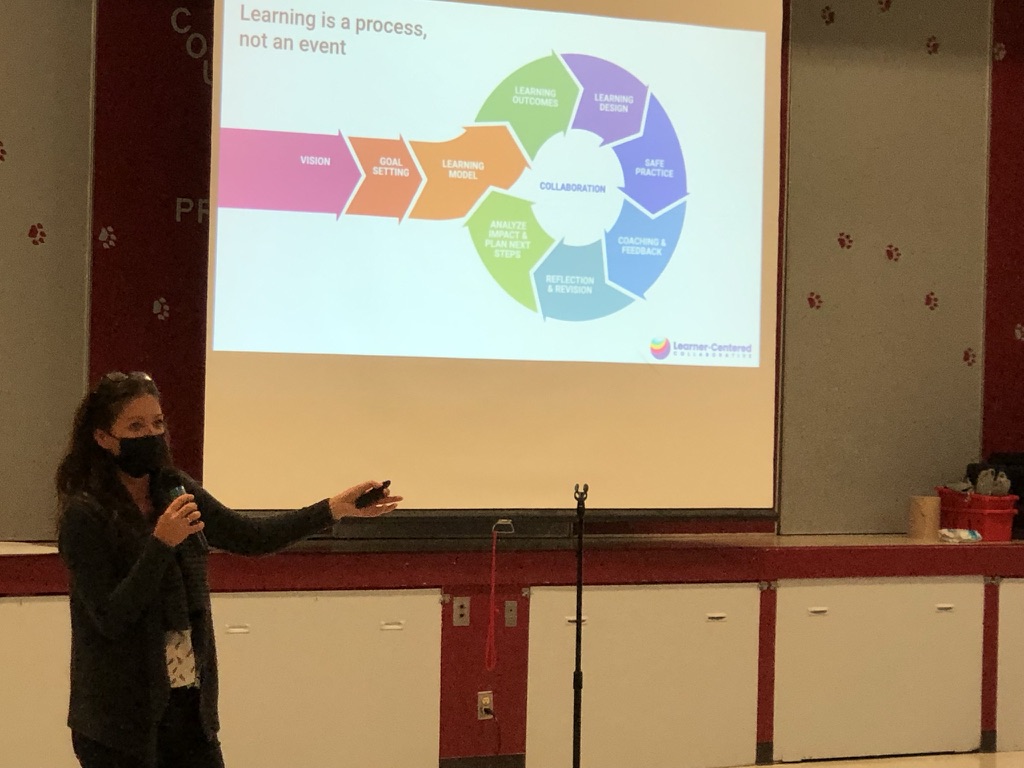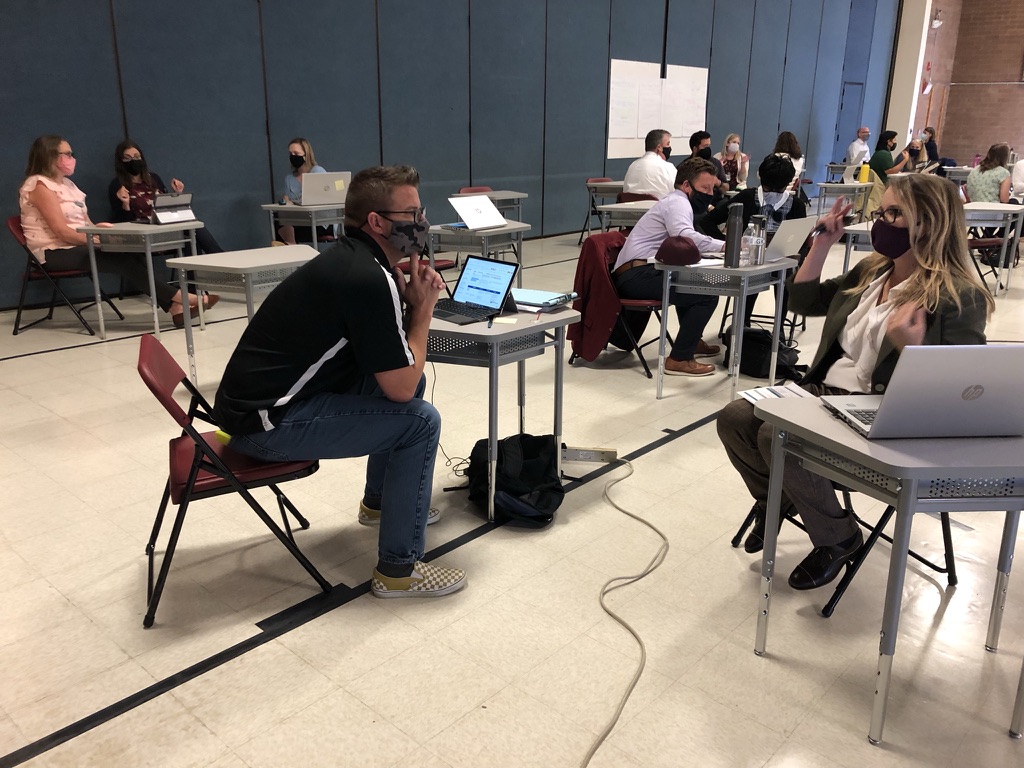By Devin Vodicka
As a sports fan, there is something about the start of a new season that breeds hope and possibility. Every year the standings are reset and all teams go back to a uniform starting line. In the offseason trades, draft picks, coaching and management changes inspire optimism about how the new team will function together.
Education is similar in that the start of the new year is an opportunity for a fresh start. Throughout my career I have always been energized by the positivity and optimism that is experienced on school campuses at this time of the year. There is something about this season that brings a sense of renewal and hope about what is possible.
For me, this sense of excitement and anticipation begins when staff returns, schools and classrooms are set up, and teams come together to establish plans for the new year. The collective energy of an inspired professional community coming together creates an amazing momentum that often sets the conditions for a similar experience when students arrive for their first day of school.
Unfortunately, that energizing return at the start of the new year didn’t occur last year. Due to legitimate health and safety concerns we didn’t see teams come together in the same way. As a result, we relied on virtual and asynchronous means of communicating. Many schools began the year in fully-remote configurations and went through various permutations of in-person, hybrid, and remote at various points of the school year. For many educators, the process has been exhausting and there have been increasing concerns about the potential for mass attrition of teachers, classified staff, and school administrators.
The good news is that this year I am seeing creative and inspiring efforts to re-create an energizing and positive start to this school year. I’ve been fortunate to experience incredible convenings in several settings and this past week I visited the state of Washington along with Katie Martin, my co-founder at Learner-Centered Collaborative and author of Evolving Education.
Our first stop was in Peninsula School District where we had the privilege of visiting two new schools, Pioneer Elementary and Swift Water Elementary. This was special for us as we had partnered with these sites to co-design their school strategies, including their vision, mission, values, goals, learner profiles, and learning models. Both of these schools had impressive facilities that were thoughtfully architectured for flexibility and collaboration. Even more impressive than the buildings was the energy and excitement of the teachers and staff who were preparing classrooms for the arrival of students. It felt like the combination of thoughtful and intentional strategy coupled with a new year, new facilities, and brand new schools was having an amplifying effect to expand a sense of possibilities for positive impact.
Next we spent a day with South Kitsap School District which was our first opportunity to see their team in person after working with them virtually last year. In South Kitsap we have been working through our learner-centered framework and this was a day to do some big-picture dreaming (through a “Back to the Future” protocol), ensure clarity of goals through development of a learner-centered scorecard, and to ensure that plans were in place to implement meaningful learning experiences that aligned with their learner profile and learning model.


The high levels of engagement of the teachers, staff, and administrators in Peninsula and South Kitsap are indicators of the incredible commitment that is pervasive in education. Precautions were in place such as masking and social distancing which made it a bit more difficult to read expressions, it was abundantly clear that being in proximity with one another to engage in the collaborative pursuit of creating new and improved experiences for all students was generating optimism and positive energy that will undoubtedly set a strong foundation for a productive start of the new school year.
I’ve shared about how my experiences as first-generation American led me to feel that I was different when I was a child and how I have come to realize that each of us as individuals are unique and different. This insight fuels my commitment to learner-centered education that sees differences as assets and builds on the strengths and interests of every learner. Similarly, we can assert that the communities in Peninsula and South Kitsap are unique and that every community, just like every learner, has their own distinct identity. With that said, there are some commonalities across these two districts that may be important as we think about how to empower all learners to know themselves, thrive in community, and actively engage in the world as their best selves:
- Both districts have devoted time and energy to review their “framework for the future” at either the school (Peninsula) or district (South Kitsap) level. This includes their vision, mission, values, goals, learner profile, and learning model.
- Both districts have taken a collaborative approach that involved staff members from various roles. Both districts also incorporated learner-centered design thinking procedures that involved noticing the context as well as empathy interviews to inform their plans.
- Both districts have taken an evidence-informed stance that will include periodic reviews of their progress relative to their goals. They are innovating not just to try new things, instead they are making adjustments to meaningfully improve outcomes that matter in their environments.
The energizing start to the new school year in these two districts reinforces my belief that a clear strategy, an inclusive approach to collaboration, and use of feedback to inform progress are essential conditions to propel the shift to learner-centered education. In fact, in Learner-Centered Leadership I label these as purpose, participation, and feedback and assert that the intersection of these three elements is the essence of learner-centered leadership. As we can see in Peninsula and South Kitsap School Districts, the movement is underway in schools and districts across the country.
Check out the book Learner-Centered Leadership: A Blueprint for Transformational Change in learning Communities for more insights, reflections, and suggestions.
Use #LCLeadership to share your ideas
Click here to sign up for the Learner-Centered Leadership email list